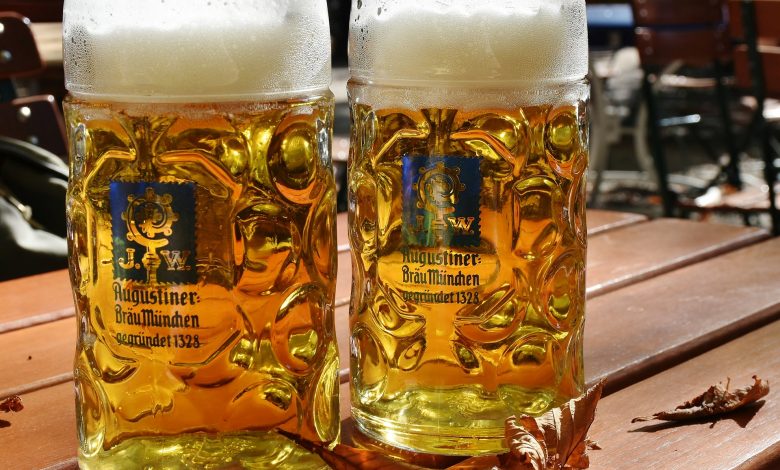Craft Beer and Micro-Brewed Beer: Very Similar but Strikingly Different

Often, many people nurture the notion that craft beer and micro-brewed beer belong to the same category. Based on this assumption, they care less about the difference, as long as the taste meets their demand.
However, if you own a pub or restaurant, it is important that you have a comprehensive knowledge of your booze and its components. Not only will this position you as a thought leader in your line of work, but it also allows you to give incisive answers to any questions raised by your customers.
It is just plainly wrong to count all low production breweries as craft breweries when they are actually micro-breweries. The correct terms to classify a brewery according to its level of production are micro-brewery and macro-brewery. While everybody will most likely have an idea of what a brewery stands for, not everyone understands exactly how these breweries work.
That is why we have decided to focus on the major similarities and differences in the making of the most popular craft beer and micro-brewed beer available in the market.
Craft Beer and Micro-Brewed Beer: Basic Similarities
As you already know, beer is a popular drink among most adults across the world. As a result, many big and small brewery industries put up a big investment in their quest to meet up with the daily demand. Since the beer industries have numerous investors, different companies emerge with their beer drink, hoping to turn the market in their favor. Beer lovers pay more attention to their beer taste than the brewer. However, some people still make an effort to research more on the brewers that produce their favorite beer drink. Below are some basic similarities between these two beer styles.
Small Scale Production

Both craft brewery and micro-brewery undergo a small scale brewing process. The brewing size is significantly small when compared to other bigger breweries. And as a result, most people regard both breweries to be the same.
Beer Taste
Owing to the close similarities in the production processes, craft brewers and microbrewers may coincidentally produce beers with the same taste. Any consumer that drinks both beers will find it hard to differentiate between the two, except he digs further.
Individual Brewers
Since both breweries operate on a small scale range, an individual brewer can handle the brewing process with little or no need for additional assistance.
Brewing Style
The brewing style of any beer industry depends on the techniques deployed while making the beer. Notably, craft breweries and micro-breweries adopt a closely-related brewing style while producing their beers.
Differences Between Craft Beer and Micro-Brewed Beer
Craft beer and micro-brewed beer are arguably the most popular beers circulating both local and international beer market. Usually, they share very similar taste and aroma and are owned by an independent brewer who aims at producing thousands of beer gallons for beer lovers. Quite a number of beer lovers also hold the belief that micro-breweries brew their beers using craft ingredients, which, in most cases, is a complete fad. Despite sharing some similarities and likeness in major areas, both craft beers and micro-brewed beers differ in a number of ways.
To put it out correctly, both craft beers and micro-brewed beers are products and do not represent specific production sizes. In fact, craft beers constitute high-quality ingredients and are made available on a limited basis or as a seasonal brew.
For most modern beer lovers, the aroma, taste, and some health benefits of craft beers and micro-brewed beers are all that matter. But if you consider the two beer styles, there are still some subtle differences that make them distinct.
Production Limit
Micro-brewed beers have a fairly constant production limit of 15,000 barrels per year. Usually, the pub owner sells off at least 75 percent of the brewed beer directly to the wholesalers, retailers, or consumers. But in some cases, the brewery owner may decide to deliver to the final consumer directly or sell directly to bars, hotels, and other last consumers.
On the other hand, craft beer production is pegged around two million gallons of beer per annum. Usually, the craft brewer ensures that the beer contains enough recipes to accommodate every beer consumer and meet the taste of modern beer drinkers. Most craft brewers brew their beer using some percentage of traditional malt to enhance the flavor and aroma of their craft beer. However, most craft breweries will only include a small quantity of barley, wheat, and oats during the brewing process.
Independent Existence

Since most craft breweries focus on quality rather than quantity, they tend to brew beer on a smaller scale when compared to industrial breweries. Ideally, a craft brewery will deploy a specific technique in an effort to provide its consumers with a healthier beer and attract more customers to choose their beer drink over the industrially-made beer. As a craft brewer, always bear in mind that you are brewing without the assistance of non-craft brewers. Hence, you may need to adopt some working ethics that will help you achieve your brewing goals, even as an independent brewer. Some of these helpful ethics include:
- Focus: As a craft brewer, you should focus on innovative ideas that will make your beer appealing and more inviting to every beer lover. Start by researching the recipes for brewing a healthier beer. You can also find out the best traditional and non-traditional ingredients that will improve the taste and scent of your beer.
- Creative ideas and implementation: Since you are brewing on a small scale, you can distribute around your localities by siting your brewery closer to your consumers. Also, you need to be stern while implementing your ideas and neglect every negative factor that may come across your way.
Brewing and Operating Techniques of a Micro-brewery
Most micro-breweries usually focus on a small scale production to meet a particular demand. As a result of this, it is possible to consume all the beer produced right at the brewing site.
Since micro-breweries brew just a few barrels of beer, they will require less brewery equipment and workforce compared to macro breweries. While it is possible for an individual to run and operate a micro-brewery as a new brewer, you need to have a significant financial backup to support every brewery process. If you are not financially balanced to handle the micro-brewing process, you can obtain a suitable loan from lenders and invest in the micro-brewing business.

One thing you should note, however, is that brewing a micro-brewed beer requires less financial support than brewing a craft beer. If you are planning on venturing into the micro-brewery business, here are some tips that will give you a head start and set you on the right path in the business.
- Endeavor to brew your beer based on your consumers’ demand. When you produce beer above your consumers’ demand, you might experience a limitless set back in your brewing business.
- Unlike craft beers that consist mostly of traditional ingredients, you can select your desired ingredients and add to your beer in accordance with the volume of beer you are brewing.
- Since you are brewing on a small scale, you can try out some unique beer brewing methods that will make your beer more appealing to your trusted consumers.
- Approach the market with a unique strategy to get your beer brand on the market trend.



